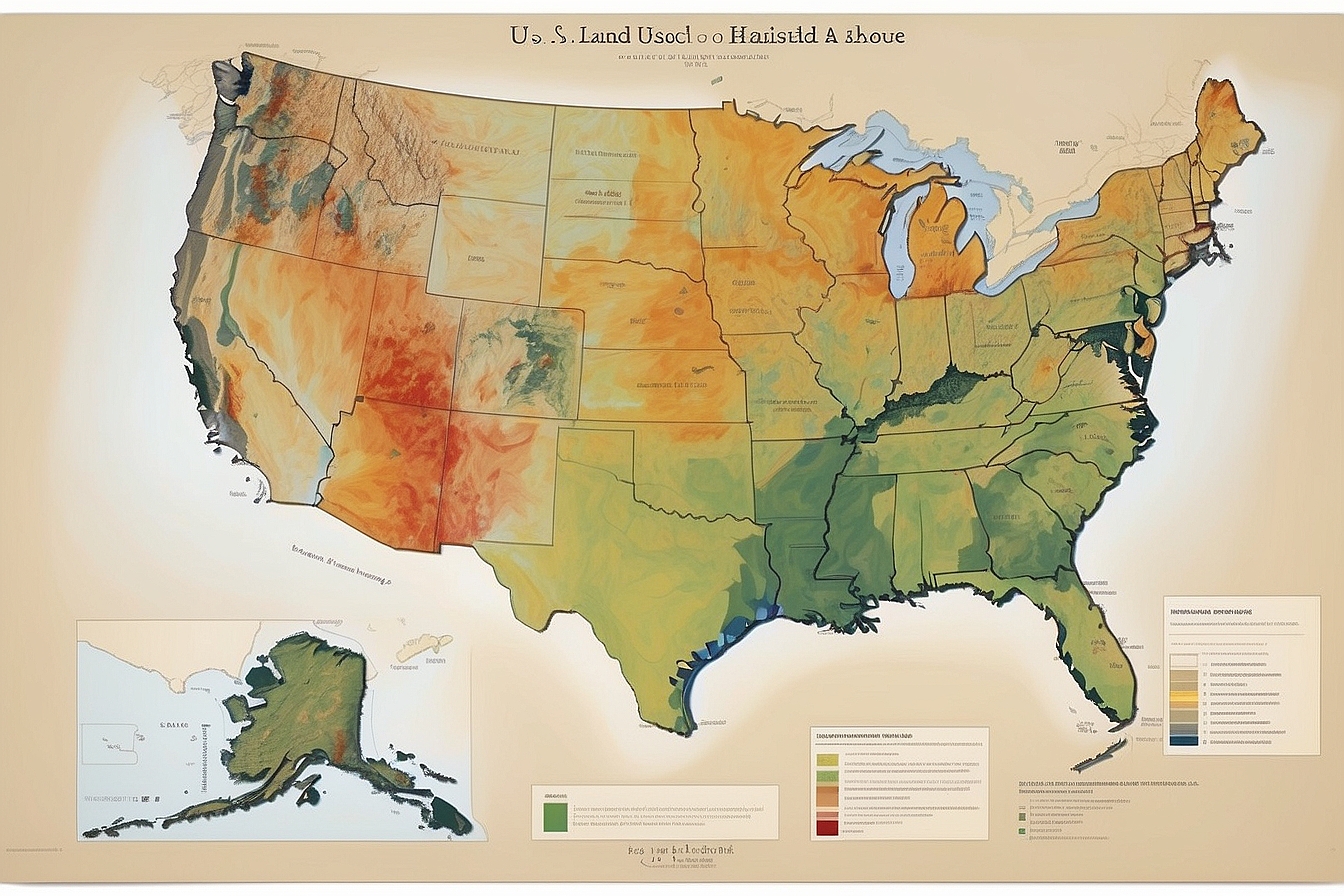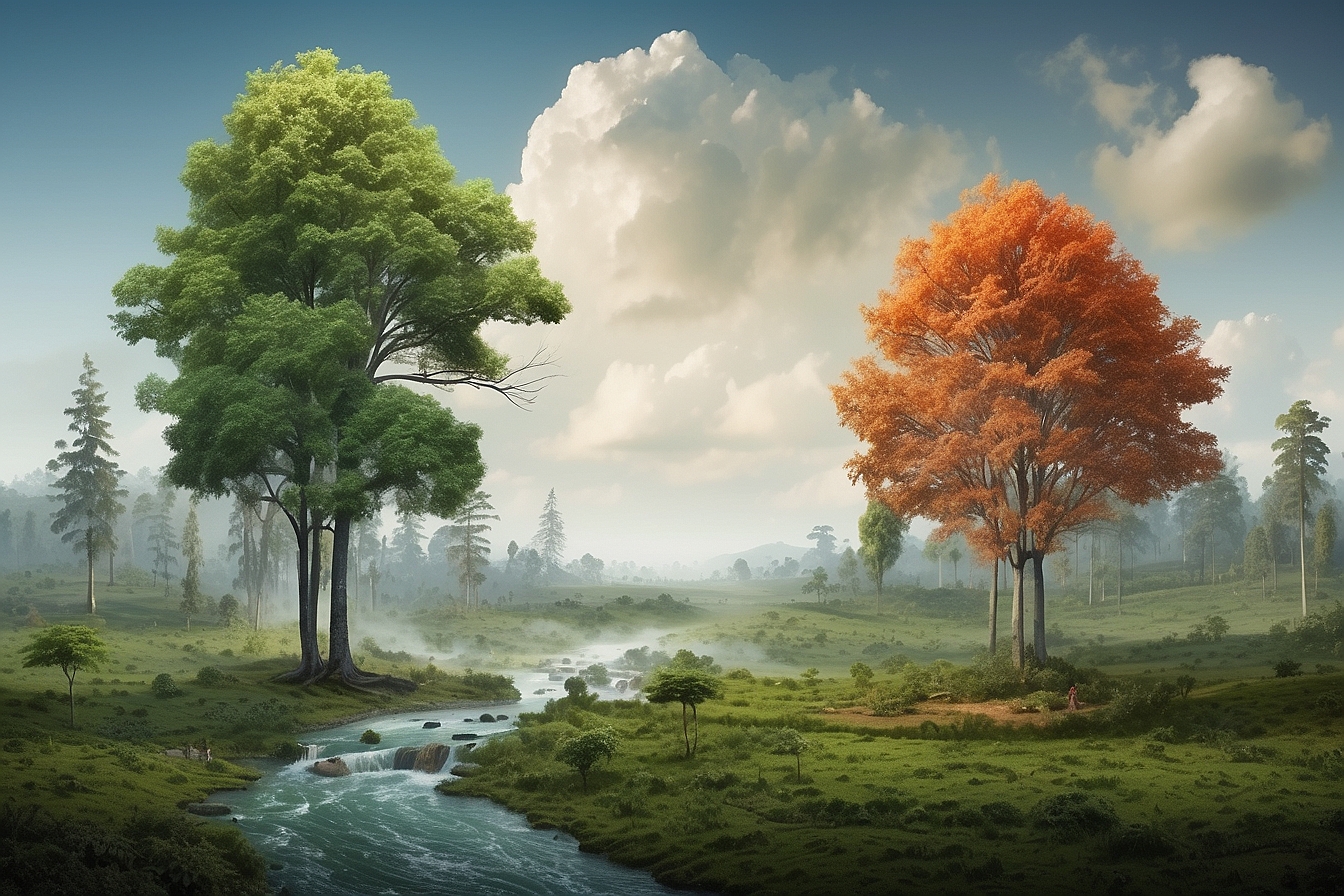Cities can often seem like daunting mazes of concrete, the hustle and bustle feeling somewhat overwhelming, even suffocating at times. You’re not alone if you’ve found yourself longing for a sanctuary of serenity amid the urban sprawl.
Urban green spaces truly are lifelines in our metropolises, offering more than just a breath of fresh air. Our exploration into these lush retreats illuminates their transformative role: they don’t just purify our air and cool the bustling streets—they also foster communal wellbeing and are integral to the vibrancy of city life.
So, let’s delve into why parks aren’t merely nice-to-have amenities but essential hubs of urban renewal—read on for that sprinkle of verdant vitality we all need!
Key Takeaways
- Urban green spaces are crucial for reducing air pollution by absorbing CO2 and other harmful pollutants, providing fresh oxygen to urban areas.
- These natural settings combat the urban heat island effect through shade and transpiration, cooling down cities significantly.
- Thoughtful planning and inclusive design of green spaces contribute to easy accessibility, environmental health, and recreational value in urban development.
- Maintaining and expanding existing green areas ensures they continue to offer their vital benefits including enhanced biodiversity, reduced noise pollution, and improved mental well-being for residents.
- Advocacy for environmental policies that prioritise green space preservation is key to sustaining vibrant city ecosystems and ensuring long-term public health.
The Importance of Urban Green Spaces
Urban green spaces play a vital role in reducing air pollution and improving air quality in urban areas. They also help to mitigate the urban heat island effect, creating cooler and more pleasant environments for city dwellers.
Reducing air pollution
We play our part in reducing air pollution by supporting urban green spaces. These areas are not just for leisure; they absorb CO and other harmful pollutants, acting as natural air filters.
Trees and plants in city parks and community gardens take up carbon dioxide, releasing fresh oxygen for us to breathe. As we populate these lungs of the city with more greenery, our collective effort helps lower the levels of smog and contaminants that affect public health.
Encouraging the growth of urban forests is a smart move toward cleaner air. We advocate for botanical gardens and natural recreation spots that expand ecosystems right in the heart of concrete jungles.
Not only do these spaces beautify our cities, but they also offer crucial environmental benefits by capturing dust, reducing noise pollution, and providing clean air – all essential factors for a healthier life in an urban setting.
Let’s continue to plant trees, create open spaces, and nurture existing green areas to ensure that every breath we take is as pure as possible.
Improving air quality
After reducing air pollution through the presence of urban green spaces, improving air quality is another significant benefit. Trees and plants in these areas absorb pollutants such as carbon dioxide, sulfur dioxide, and nitrogen oxides from the atmosphere.
By removing these harmful substances from the air, green spaces contribute to cleaner and healthier urban environments for all residents.
Additionally, trees release oxygen during photosynthesis, which enhances the overall air quality within cities. These natural processes work together to create a more breathable and refreshing atmosphere in densely populated urban areas.
Mitigating the urban heat island effect
Urban green spaces play a vital role in mitigating the urban heat island effect. Trees and vegetation within these areas provide shade, cooling the surrounding environment. By releasing water vapor through a process called transpiration, plants further reduce ambient temperatures, offering relief in densely built urban areas that often experience higher heat levels.
Additionally, green spaces absorb and trap carbon dioxide emissions from vehicles and buildings, aiding in diminishing the heat island effect. The planting of trees helps counteract this phenomenon by shading surfaces such as roads and rooftops that typically absorb heat.
As a result, these natural oases can effectively lower temperatures and combat the adverse effects of urban heat islands for the benefit of both inhabitants and the environment.
Policies and Design for Urban Green Spaces
Proper planning and design of urban green spaces is essential to ensure maximum benefits for the environment and city dwellers. Incorporating green spaces into urban development, promoting the maintenance and growth of existing spaces, and creating policies that prioritise the preservation of these natural areas are crucial steps towards creating healthier, more sustainable cities.
Proper planning and design for maximum benefits
To achieve maximum benefits from urban green spaces, we prioritise thoughtful planning and design. This can include:
- Strategically locating green spaces to ensure they are easily accessible to all residents, enhancing community engagement and interaction with nature.
- Incorporating a diverse mix of vegetation, considering native species that require minimal maintenance while offering ecological benefits like carbon sequestration and habitat for local wildlife.
- Introducing sustainable water management systems to support the green spaces through rain gardens, permeable pavements, and bioswales, reducing stormwater runoff and improving groundwater recharge.
- Creating multifunctional spaces that serve as recreational areas, wildlife habitats, natural sound barriers, and pollution buffers, providing multiple environmental and social benefits.
- Designing green infrastructure to enhance urban biodiversity by integrating various plant species that attract pollinators and beneficial insects, fostering a healthy ecosystem within the city.
- Implementing innovative landscape designs that improve air quality by selecting plants known for their ability to filter pollutants efficiently while also being visually appealing.
- Prioritising scalable design solutions that allow for flexibility in the size and location of green spaces to accommodate future urban development without compromising their functionality or accessibility.
Incorporating green spaces in urban development
When planning urban development, it is vital to integrate green spaces seamlessly into the infrastructure. Incorporating parks, gardens, and trees within city plans enhances environmental and public health benefits.
Strategically placing green areas allows for cleaner air quality by absorbing carbon dioxide emissions while providing recreational venues for residents. By integrating nature reserves and ecosystems within urban landscapes, cities can combat the heat island effect, creating cooler environments and promoting biodiversity.
The design of our cities has a significant impact on the environment; therefore, prioritising green spaces in urban development is crucial for sustainable living. Creating vibrant green hubs should be at the forefront of city planning strategies to ensure a healthier and more balanced ecosystem.
Promoting the maintenance and growth of existing green spaces
To ensure the longevity and expansion of urban green spaces, it is crucial to actively engage in their maintenance. Regular upkeep of these areas helps preserve their beauty and functionality while continuing to provide essential ecosystem services.
Furthermore, promoting the growth of existing green spaces fosters a healthier environment for all inhabitants. Encouraging community involvement in local gardening initiatives and park clean-up events can bolster appreciation for these vital public spaces.
Implementing sustainable landscaping practices ensures that existing green spaces thrive. Embracing environmentally friendly approaches like composting, mulching, and organic pest control nurtures soil health and promotes biodiversity within urban parks and gardens.
Conclusion
In conclusion, urban green spaces play a vital role in enhancing the well-being of city dwellers. They act as natural air purifiers, absorbing CO2 and releasing oxygen, thereby reducing air pollution and improving air quality.
Additionally, these pockets of greenery help mitigate the urban heat island effect, contributing to a healthier and more sustainable urban environment. Effective policies and thoughtful design are crucial for maximising the benefits of urban green spaces in our cities.
FAQs
1. What are urban green spaces and why are they important?
Urban green spaces, like parks and gardens, act as the lungs of the city by absorbing CO2 and providing clean air, helping to create healthier green cities.
2. How do urban gardens benefit people living in the city?
Urban gardens give city dwellers a natural retreat, improving mental health and allowing residents to connect with nature right where they live.
3. Can having more green spaces help combat pollution?
Absolutely! More green spaces mean more plants to soak up carbon dioxide (CO), which helps reduce pollution levels in our growing cities.
4. How can I help expand urban green spaces in my area?
Get involved with local planning efforts or community gardens to promote the expansion of these vital “lungs” within your own neighborhood or city.





